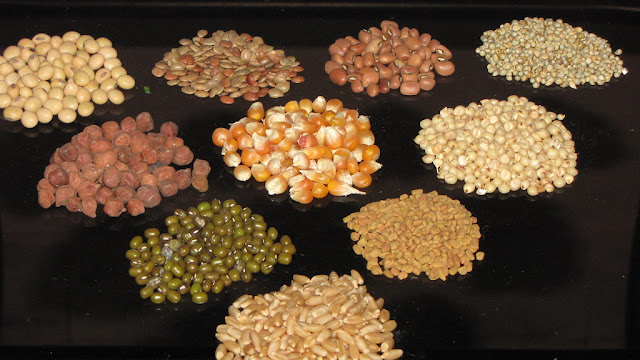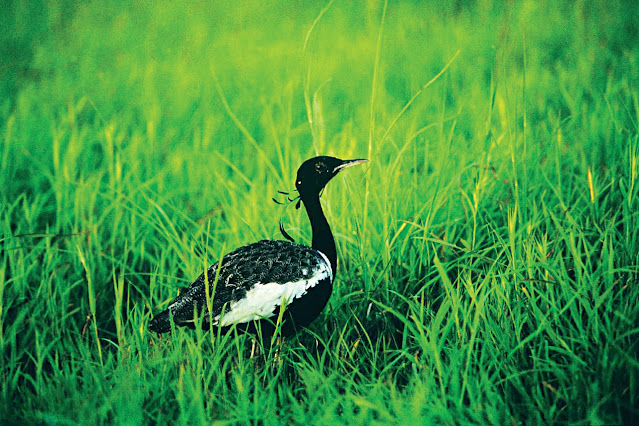Conference of Parties 16 of the UNCBD ... What does it portend for India?
Conference of Parties 16 of the UNCBD
What does it portend for India?
By Malini Shankar,
The 16th Conference of Parties (COP 16) of the United Nations Convention on Bio-Diversity or UNCBD COP 16 is being held for over a fortnight starting 16th October 2024 in Cali Colombia. What do these big words mean exactly and why is it so significant? Let’s try to decode in this three part Curtain Raiser series, brought to you by Digital Discourse Foundation.
The United Nations is a global body of governance that came into force in the Post IInd World War period when Peace was badly needed on fair terms. It has, as its members 193 signatory nations and India was one of the first signatory member states having become a Member State as far back as on 30.10.1945 barely a few days after the UN came into existence, while Germany for instance became a Member State only in 1973. That should explain in a crisp sentence the global significance of Gandhian Thought which is virtually the founding ideology of the august world body. That the US and many other nations have still not ratified the Geneva Convention till date brings into sharp focus the withering meaning, yet immortal significance of Gandhian Thought.
The UN’s main bodies are: General Assembly (UNGA), Security Council (UNSC), Economic and Social Council (UNESCO), Trusteeship Council (UNTC), International Court of Justice (UNICJ) and World Health Organisation (WHO). Other UN agencies include UNEP, UNHCR, UNDP, UNFCCC, etc… |
| Refugees are accommodated in UNHCR tents near Damascus. PIcture Credit: UN Photos. |
“Convention” here denotes the legal status of the Programme – Biodiversity Conservation. The Convention is a legal covenant that is legally binding on member states / signatory states. The “Conference of Parties” identified in numerical order strives to coordinate the legal mandates by heeding to the legal challenges faced by States and the UN agencies in implementation of policies conducive to Biological Diversity.
Now we come to the most perplexing phenomenon: Biodiversity… or biological diversity. This refers to the botanical wealth of the planet and its biological significance. That has come to construe the value of this biological wealth for Humankind.
This
significance has manifested inter alia as medicinal plants, floriculture
plantations, Bioshields for disaster mitigation, Holy insignia of indigenous Peoples, traditional wisdom and knowledge, and areas of unrivalled biodiverse wealth
with unsustainable human footprint has been designated as ‘Biodiversity
Hotspots’. For example – India’s Western Ghats – a 3000 kilometres mountain
chain on India’s west coast which hosts thick wet evergreen rain forests, moist
and dry deciduous forests, sub-montane pine forests and shrub forests.
The Western Ghats supports a diverse spectrum of fauna and flora. It is home to about 508 species of birds, 218 species of fishes, 157 species of reptiles, 137 species of mammals and 126 species of amphibians endemic to this Biodiversity Hotspot. Atleast 60 Rivers take birth in this Biodiversity Hotspot.
Apart from tigers, other
carnivores in these thick jungles include leopards, Black Panther, and the
Indian wild dog. Elephants, Gaur, Great Indian Hornbill, Asian sloth Bear, king
cobras four of the most venomous reptiles in South Asia, and atleast two types of crocodiles, Giant Malabar squirrel are all endemic
creatures in these jungles. There are over 25 conservation areas, tiger
reserves, national parks and wildlife sanctuaries besides reserved forests in
this Biodiversity Hotspot. It is the whole catchment area for the South west
Monsoons on which millions of people in the Subcontinent and South and Southeast
Asia are dependent. The Western Ghats is the biological gene pool of the entire botanical diversity in South and Southeast Asia.
Kadar, Muthuvar, Malai Malasar, Irulas, Kurumbas, and Badagas, Kurubas, Jenu Kurubas, Soligas, Betta Kurubas, Yeravas, Kotas, Kunubis, Naiks, Siddis, Gowlis, are only some of the tribes who inhabit this Mountain chain. 75 years after Independence, hapless forest dwellers without an indigenous identity - "some of them are tribes, not indigenous people, but most are hapless forest dwellers who know not why their ancestors were abandoned in forest areas in the first place!" according to Praveen Bharghav of Wildlife First in Bangalore and without livelihood security, their meagre earnings do not contribute to the Economy per se. More pertinent is the danger they lend themselves to by living cheek by jowl in tiger terrain. Besides, living cheek by jowl with wildlife will neither embellish India’s Human Development Index nor will it solve Human Wildlife Conflict.
The biodiverse wealth – seen as significant for humankind includes medicinal plants like Tricophus zeylanthicus, Rauvolfia serpentine, Holy Basil, turmeric, neem. Some of Asia’s, indeed the Planet’s oldest trees are found in the Western Ghats.
 |
| The tribal women from Gujjar communities, living in Sariska Tiger Reserve yearn for higher standard of living so that their hardships can be overcome... Picture credit: Malini Shankar |
That these tribes are the link between biodiverse
inheritance and modern Man comes out in the trade significance attached to it.
For example the Tricophus
zeylanthicus and Passion Fruit are reliable sustainable natural medication for hypertension.
Native nutrition, it is now established helps
reverse endocrine disorders like Diabetes and Hypertension which have assumed
pandemic proportions in this century. Amla or Gooseberry is the sure fire
diabetes reversal agent, a low hanging fruit indeed. Banana stem and barley are
known to stymie Chronic Kidney Disease and Nephrites. Millets? A sure fire
remedy to reverse Diabetes.
 |
| India is blessed with seven major millets and two minor millets. India's agro diversity traces its botanical roots to biodiversity. Picture credit: Malini Shankar. |
Hibiscus
nectar helps women cope with gynecological issues. Spinach soup helps cure
insomnia. Pharmaceutical companies worldwide
are unable to stall drug resistance. Yet it is the pharmacological industry
that stands to gain the most by medicinal plants. But obviously unsustainable
exploitation of biodiverse wealth. To prevent unsustainable pillage of
medicinal plants advocacy of ex-situ conservation needs to be legally enforced
by treaties like UNCBD.
Similarly ex-situ conservation of orchids will
aid the Floriculture and Perfume Manufacturing industry worldwide. Infact
Ex-situ conservation of endemic flora will be economically sustainable. Rural
livelihoods world over will be boosted by forex revenue.
Talking
of rural livelihoods, Indian Prime Minister Narendra Modi in his first term
paved the way for inclusive banking by starting Jan-Dhan accounts where the
humble simple villager in a forlorn forest landscape has opened bank accounts
and operates Google Pay and other UPI apps.
In the next part we will understand the significance of Bioshields for
Disaster Mitigation; we will also discuss Human Wildlife Conflict Mitigation.
Pictures: Malini Shankar, Vandan Jhaveri Asif Khan, Isaac Kehimkar of (Bombay Natural History Society),Creative Commons,
Digital Discourse Foundation.













Comments
Post a Comment